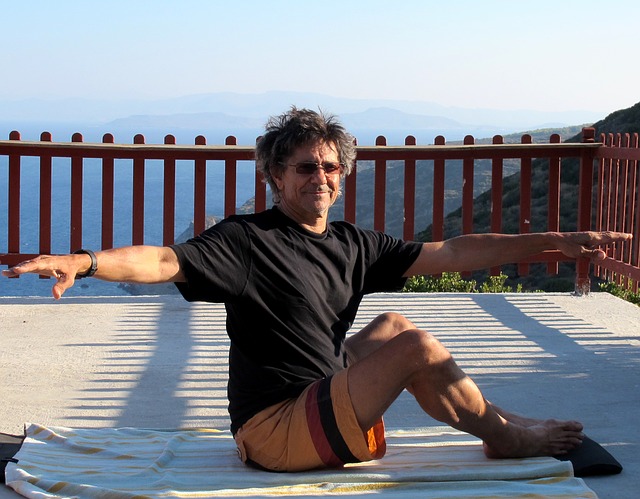Joseph Pilates was sickly as a child and suffered from asthma and rickets. He created his distinctive method of physical exercise and mental conditioning, in part, to help improve his own frail body. He emphasized that there should be lengthening of spine with each move. As a result, he lived a fit and able life. Additionally, developing core strength helps with other movements of the body during any number of activities.
There is a rise in the popularity of Pilates today, but it is not only for fitness programs, but for some rehabilitation as well.
Solving back problems
An oft-cited systematic medical review evaluating the effectiveness of Pilates exercises to strengthen lower back revealed that people who had back pain for more than 12 weeks and did Pilates exercises had “greater improvements in pain and functional ability compared to usual care and physical activity in the short term.” People with chronic low back pain benefit from Pilates in the short term as compared to others who do not do the exercises.
Clients with back issues
Before anyone starts an exercise program, it is important for him or her to check with a doctor to be sure no further harm may occur by beginning a program such as Pilates. Getting clearance from the doctor as well as a special order or guidelines that a Pilates instructor can follow is helpful. Ask clients to provide a doctor’s note indicating clearance to participate in the workouts. One-on-one sessions are always more preferable for those with back pain than having the student just jump into a Pilates class for mat work.
Additionally, while it does not help cure scoliosis–an abnormal curvature of the spine–teaching Pilates programs designed specifically for scoliosis may help increase muscle strength, range of motion and decrease pain levels. Beware of the weakened condition of scoliosis so that the exercises don’t backfire.
Where to start
Lower back pain is very common. In fact, about 80 percent of adults experience low back pain at some point in their lifetimes. For people who come to Pilates learning that “it might help your back,” it’s good to start with simple movements that may help the instructor determine if the client is using best practices for their back.
For example, ask the client to perform a squat. This is a common movement that people may do when they lift laundry baskets or small children. The instructor may quickly find that such a movement aggravates the client’s back muscles due to poor alignment like a tilt of the pelvis. The client may need to fold more at the hip to encourage hip flexion. Taking some time to discover what may be causing the pain can be very valuable in the process overall and will help lay the ground work for an individualized program.
On that note, if you have interest in the relatively more lucrative business of teaching privates, Pilates for back care is a good market due to the shear number of people looking for relief.
Work out wisely
Start simply.
- Clients should always go slowly and never do anything that hurts.
- Remind them how important breathing is to their exercises. Deep breathing helps activate supportive core muscles. Always engage in deep inhales and full exhales.
- Keep shoulders down and away from the ears and keep the neck long.
- Engage the abs. Support the back by engaging abdominal muscles during exercise.
- Keep hips and shoulders even and pay attention to symmetry and balance.
Exercises to strengthen and restore lower back
Start with stretching. Stretching can be restorative to the lower back if they are done with support.
A child’s pose is a good starting point, but always begin cautiously. Start in the kneeling position on a mat. The buttocks can rest on the heels. Knees should be open a bit, but toes are together. Lean forward slowly until the forehead rests on the floor. Reach out arms to the side or in front. Breathe deeply. This should help relax and stretch the lower back.
Another good stretch is the spine stretch. Using the abdominal muscles to control the stretch will help the hamstring as well as the back. Start by sitting up on the mat with legs straight and apart about shoulder width. Flex the feet. With relaxed shoulders, reach arms up to the sky. Inhale, extend arms out with a bend and place fingertips on the floor between the legs. In the Pilates way, lengthen the spine with an exhale and curve forward. Focus on a deep C-curve and do not collapse. The abdominal muscles should support the movement. Inhale and reach the fingers further in a full stretch. With an exhale, use the lower abdominals and bring the pelvis upright and back into a sitting position.
Because back pain can often be attributed to weak abdominals, have clients try a chest lift to help with strengthening. On a mat, lie on the back and bend knees, keeping feet flat on the floor. Hip, knee and ankle should align. Hands can support the back of the head. Slightly lift and inhale. With an exhale, pull the belly button toward the spine and allow the spine to lengthen. The work should be done in the abdominals, in a concave position. Meanwhile, neck and shoulders should be relaxed.
Every client is unique
Keeping in mind that every human reacts differently to exercises, monitor each individual. Back pain has many causes. What works wonderfully for one person many not work for another person. Additionally, Pilates may not be right for the client at all. Learn and adjust as you go.

